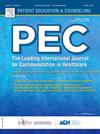医疗服务提供者对 COVID-19 疫苗接种的建议:流行率、差异和相关性
IF 2.9
2区 医学
Q2 PUBLIC, ENVIRONMENTAL & OCCUPATIONAL HEALTH
引用次数: 0
摘要
我们评估了医疗保健提供者对 COVID-19 疫苗接种的建议、不同社会人口因素之间的差异,以及与医疗保健覆盖率、社会规范、COVID-19 疫苗犹豫不决和福克斯新闻偏好之间的关联。我们利用 2022 年 10 月收集的阿肯色州居民随机抽样调查数据(N = 2201),确定了有个人医疗保健提供者的成年人,他们构成了本研究的分析样本(n = 1804)。接受推荐的调整几率与医疗保健覆盖率呈正相关(aOR=1.66;95 % CI [1.05,2.64]),与认为 "很少"(aOR=0.48;95 % CI [0.33,0.72])或 "一些但不是很多"(aOR=0.57;95 % CI [0.41,0.80])而不是认为 "几乎所有 "身边的人都要接种疫苗呈负相关。接受推荐的调整后几率与非常犹豫(与完全不犹豫相比)呈负相关(aOR=0.65;95 % CI [0.47,0.88])。结论阿肯色州的大部分成年人都没有获得医疗服务提供者关于COVID-19疫苗接种的建议,不同社会人口群体获得建议的情况也不一致,并且与医疗保健覆盖率、社会规范和疫苗犹豫不决有关。本文章由计算机程序翻译,如有差异,请以英文原文为准。
Healthcare provider recommendations for COVID-19 vaccination: Prevalence, disparities, and correlates
Objective
We assessed healthcare provider recommendations for COVID-19 vaccination, disparities across sociodemographic factors, and associations with health care coverage, social norms, COVID-19 vaccine hesitancy, and Fox News preference.
Methods
We utilized random sample survey data of Arkansas residents (N = 2201) collected in October 2022 to identify adults with a personal provider who make up the analytical sample of this study (n = 1804).
Results
Over a third (37.2 %; n = 607) of the weighted sample did not receive a recommendation. Adjusted odds of receiving a recommendation were positively associated with health care coverage (aOR=1.66; 95 % CI [1.05, 2.64]) and negatively associated with perceiving "very few” (aOR=0.48; 95 % CI [0.33, 0.72]) or “some but not many” (aOR=0.57; 95 % CI [0.41, 0.80]) rather than “nearly all” people close to them to be vaccinated. Adjusted odds of receiving a recommendation were negatively associated with being very hesitant (vs. not at all hesitant) (aOR=0.65; 95 % CI [0.47, 0.88]).
Conclusion
Provider recommendations for COVID-19 vaccination were not provided for a large portion of Arkansas adults, were inconsistently provided across sociodemographic groups, and were associated with health care coverage, social norms, and vaccine hesitancy.
Practice implications
Intervening on disparities in COVID-19 vaccination may require addressing disparities in provider recommendations.
求助全文
通过发布文献求助,成功后即可免费获取论文全文。
去求助
来源期刊

Patient Education and Counseling
医学-公共卫生、环境卫生与职业卫生
CiteScore
5.60
自引率
11.40%
发文量
384
审稿时长
46 days
期刊介绍:
Patient Education and Counseling is an interdisciplinary, international journal for patient education and health promotion researchers, managers and clinicians. The journal seeks to explore and elucidate the educational, counseling and communication models in health care. Its aim is to provide a forum for fundamental as well as applied research, and to promote the study of organizational issues involved with the delivery of patient education, counseling, health promotion services and training models in improving communication between providers and patients.
 求助内容:
求助内容: 应助结果提醒方式:
应助结果提醒方式:


